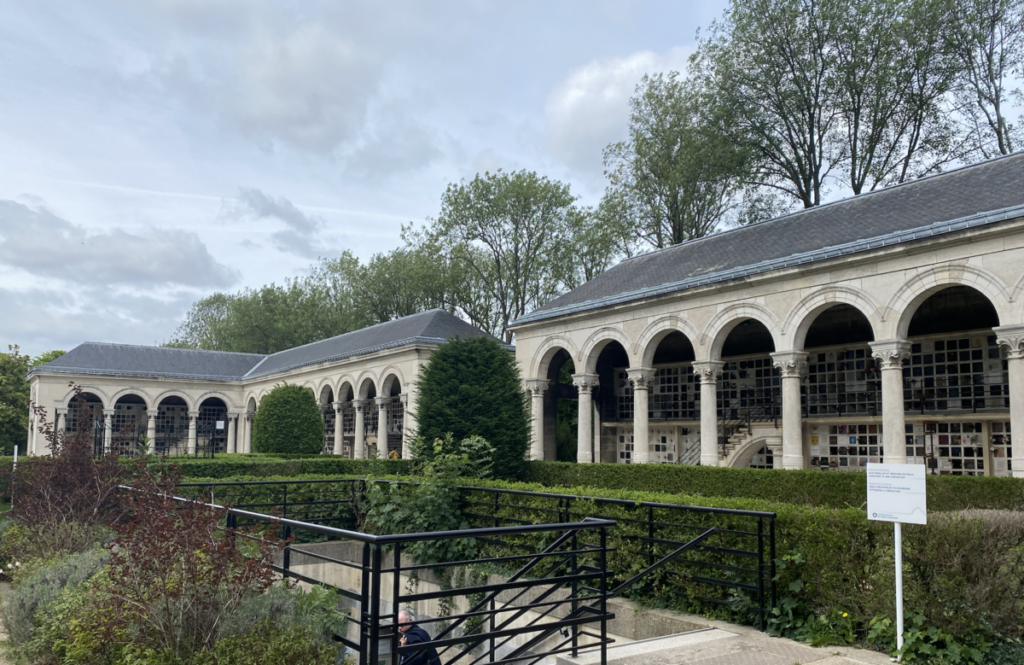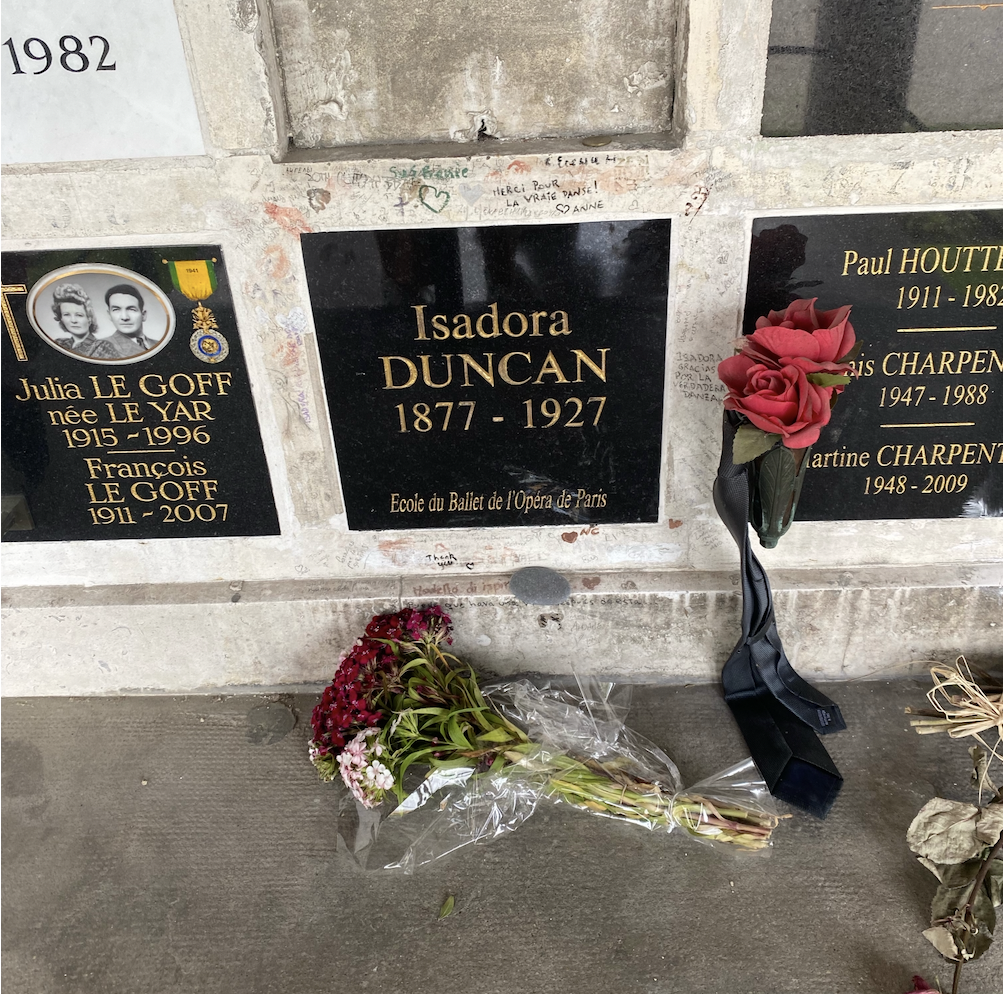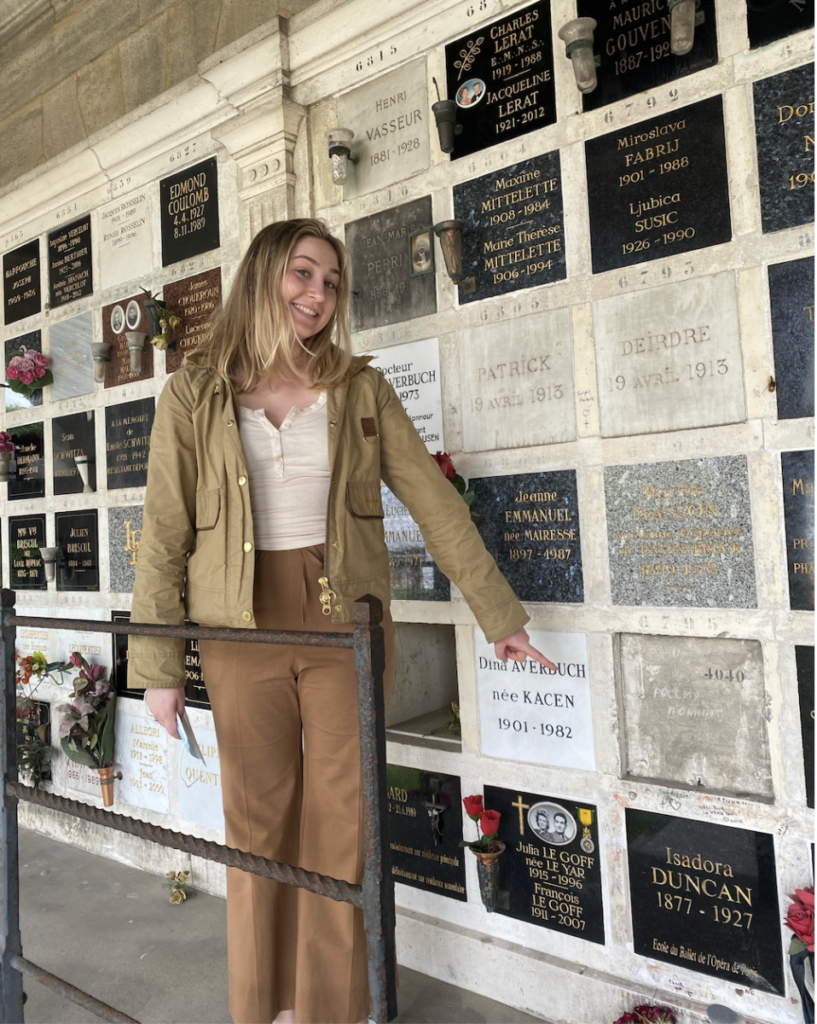The visit to the famed Père Lachaise Cemetery was a true reminder of how much French culture emphasizes and reveres the arts. It is the largest cemetery in Paris, hosting over 3 million visitors each year and housing the burial sites of renowned musicians, singers, writers, and dancers, among others. The size of the cemetery, as well as the intricacy and grandeur of each tombstone and columbarium are a testament to the French culture of honoring their loved ones, especially artists. Of the many notable people buried there, I was on a mission to find the columbarium of Isadora Duncan, an American dancer who is credited with being one of the founders of modern dance in the western world. As France was also the birthplace of ballet, Duncan’s final resting place being Paris is a symbol of the eminent role of dance in French culture, both in respecting classical forms and encouraging the art to grow and change.
Isadora Duncan was hard to find at Père Lachaise because, unlike many of the other famous figures buried there, she was cremated and was at the Père Lachaise Columbarium. The columbarium is a huge structure with memorial tiles lining two stories of each wall, but with the help of Elena, Robina, Jewel, and Jacob (and Google), we finally located her. Duncan’s memorial is certainly more modest than some of the other sites at Père Lachaise. However, I noticed a note above her tile that read “Merci pour la vraie danse!” which translates to “Thank you for real dance!” This is just a small example of French appreciation for dance, but stuck out to me nonetheless.


As a modern dancer myself, I understand how dance came to be such an appreciated art form in France, but I am also interested in the effects of dance on the brain that also may make it a useful intervention in movement disorders such as Parkinson’s Disease (PD). Research by Burzynska et al. in 2017 showed that dancers had greater functional connectivity in areas of the brain related to motor learning. This could be a reflection in the brain that dancers have better motor coordination and balance than non-dancers. As motor coordination and balance are two areas in which people with motor impairments typically are lacking, this finding supports work being done at Emory by Dr. Madeleine Hackney. Dr. Hackney is developing dance-based rehabilitation interventions for individuals with PD in order to improve motor skill and cognition in PD patients. Making connections between the greats of dance history and beginning to understand what is happening inside the brains of dancers at Père Lachaise Cemetery was a great way to end the first week of classes here in Paris!

References:
Burzynska, A. Z., Finc, K., Taylor, B. K., Knecht, A. M., & Kramer, A. F. (2017). The Dancing Brain: Structural and Functional Signatures of Expert Dance Training. Frontiers in human neuroscience, 11, 566. https://doi.org/10.3389/fnhum.2017.00566
Emmanouilidis, S., Hackney, M. E., Slade, S. C., Heng, H., Jazayeri, D., & Morris, M. E. (2021). Dance Is an Accessible Physical Activity for People with Parkinson’s Disease. Parkinson’s disease, 2021, 7516504. https://doi.org/10.1155/2021/7516504

Great post! I also think Dr. Hackney’s work is really cool! Slightly related, when I was working with kids studying motor inhibition using transcranial magnetic stimulation (for an ADHD and Tourette’s syndrome lab) we observed, though did not officially measure, that children who were playing musical instruments seemed to have more advanced motor development than their non-musical counterparts. It is really amazing how the arts impact our brain!